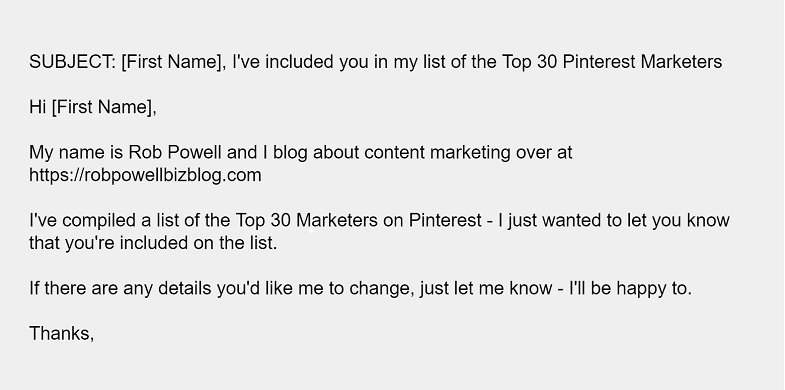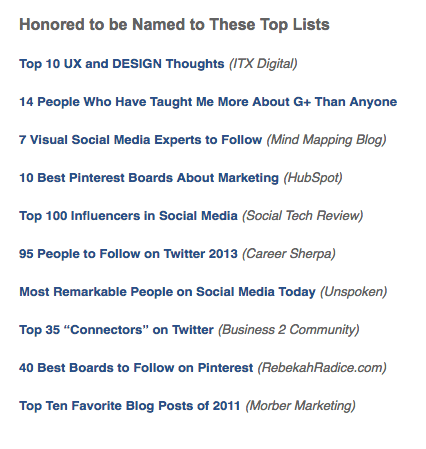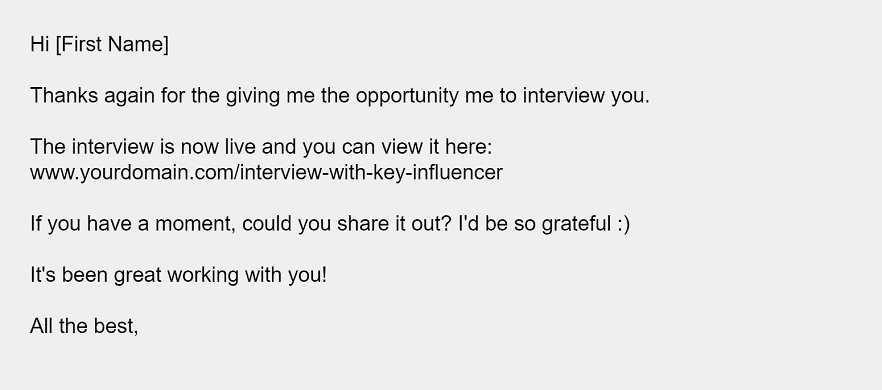You might not believe this, but it’s true:
Before he became a blogging superstar, Jon Morrow was struggling.
He’d been blogging for a couple of years but he’d hit a brick wall.
Actually, it was a glass ceiling. The glass ceiling of the blogosphere.
That’s when you reach 100 visitors a day and can’t go any further. Nothing you do makes a blind bit of difference.
So he quit what he was doing.
Gave up blogging completely.
And about 6 months later he hired a blogging expert to do a post mortem – examine all his stuff and tell him what he’d been doing wrong.
The answer was simple but astounding: “No one knows who you are”.
“Yeah, but isn’t that the point of publishing great content? You write lots of great stuff, and then the word spreads, and popular bloggers find out about you?”
“No,” replied the expert. “Popular bloggers find out about who you are, and THEN they read your content, and THEN they link to you. Connections come first. Great content comes second.”
Great content comes second? Seriously?
That was an eye-opener for me and I’m guessing it will be for you too.
In a nutshell, you need to get on the radar of the influential bloggers in your niche, form relationships with them, cultivate those relationships, and then let your top quality content do its work.
But how exactly do you get on their radar?
That’s what I’m going to show you in this article – three kinds of influencer outreach that will get you noticed by Influencers and bring you traffic, backlinks, and authority.
1. Expert Roundups
Have you ever wondered how bloggers get chummy with the key players in their niche?
They write expert roundups!
a) Are Roundups Still Effective?
But expert roundups have gotten some bad press recently, in particular from Rand Fishkin.
Rand’s main objections to expert roundups are:
- They’ve been overdone because they’re easy to do
- They’re a poor format for conveying information
- They don’t generate links
There are certainly a lot of expert roundups floating around the blogosphere, most of them not well done.
Unfortunately, there’s a widely held view that with an expert roundup, other people write your post for you.
This has led to roundup posts that are nothing more than 20 to 30 expert opinions slapped together with hardly any Introduction and no Conclusion at all.
But this is good news! It means it’s a field where you can really shine if you put the work in.
In my experience, a good roundup post is far more work than a standard 1500-word article.
Why’s that?
Because the key to a good roundup is taking what the experts have said and summarizing it in a way that gives the reader a valuable overview of the topic.
And that’s exactly what’s missing from most roundups.
Expert roundups can be a very good format for conveying information, as long as you summarize or synthesize the information provided by the experts.
b) Roundups Generate Social Shares
What about backlinks?
Well, it’s true—roundups perform poorly in this area. But they generate a lot of social shares.
And according to SEO expert Brian Honigman, “social shares are the new form of link building”.
This is what he said:
“Today, links are mainly achieved through developing original content that is in turn, shared across social media. Links to your content on Facebook, Twitter, LinkedIn, Google+, YouTube and other social networks help the search engines understand what websites are credible and should be ranked for what keyword phrases.”
Brian is absolutely right!
How do I know?
Go to Google and type in “tips for first-year bloggers” and this is what comes up:

In position #2 is my roundup post – 19 Experts Reveal Their Top Tips For First Year Bloggers.
It beats a similar blog post from Blogtyrant titled: ‘5 Realistic Benchmarks for Your First Year of Blogging’.
Yet Blogtyrant has been around for much longer than my website and has a Domain Authority of 52, compared with my DA of 21.
We both targeted first-year bloggers. How on earth did I manage to rank higher in Google?
The answer is social media shares – 547 of them, and counting:

But it doesn’t stop there:
The main reason for doing roundups is building relationships with Influencers who:
- Will share your content
- Have massive followings
c) Building Relationships With Influencers
That’s where roundup posts excel!
There are at least 5 points of contact with each expert in the process of creating a roundup post:
- The initial outreach
- The expert’s response
- Your ‘Thank you’ email
- Your email notifying them that the post is live
- Their email telling you they’ve just shared it to their followers on Twitter
That’s a lot opportunity for building rapport with Key Influencers in your niche!
d) The 6 Key Steps To Creating A Roundup
There are six key steps to creating a successful roundup post:
- Deciding on the Question
- Finding the Experts
- Finding Email Addresses
- Doing the Outreach
- Writing the Article
- Promoting the Article
For a complete guide on how to do it, see my article ‘The Definitive Guide to Writing Roundup Posts That Go Viral’.
2. Top Lists
What if I told you about a technique that uses basic human psychology to get your content shared all over the Internet by people with large followings.
Would you be interested?
I thought so!
This is a strategy I stumbled upon in an article on Income Diary.
I was skeptical at first but decided to give it a try.
The results were astonishing!
More about that later.
First, the technique, as described by Josh Dunlop.
It’s quite simple. Just compile a list of 20 or 30 top Influencers in your niche.
Here are some examples of top lists created by Income Diary:
- 50 Most Influential People In Blogging 2010
- Top 30 Female Internet Entrepreneurs
- Top Earning Blogs
- Top 30 Richest Young Entrepreneurs
- 20 Top Blog Sales
Here’s a top list I created about 10 days ago:
The Top 30 Marketers on Pinterest

There are four key steps to creating a Top List article:
a) Find The Candidates
The easiest way to do this is simply type into Google your keyword plus “top influencers”.
For my article on Pinterest marketers, I typed in Pinterest +”top marketers” (and variations).
I found about 5 lists that other people had compiled.
Then do a ‘skyscraper’ — if other people have created lists of 10, 15, and 20, you could go for 30 or even 50.
Remember: the more Influencers on your list, the more firepower you’ll have in terms of social media shares and backlinks.
b) Order The Candidates
This is pretty straightforward:
The title of your top list will usually imply some kind of ranking factor, e.g. most followers, richest, highest monthly web income, etc.
If your ranking factor is monthly web income, you’ll need to download their income reports and enter the data into a spreadsheet and then sort it by value.
For their article on Top Earning Websites, Income Diary analyzed the SEC 10-K reports submitted by publicly traded companies within 60 days of the company’s fiscal year end.
In my case, I simply found the Influencer’s Pinterest page and noted down the number of followers they had.
Sometimes there’s no objective ranking factor you can use. For example:
Top 10 Most Inspirational Bloggers In The World
In that case, you just need to make sure that there’s a plausible reason for each of your candidates to be included on your list.
c) Write A Paragraph Or Two About The Person
For this, you’ll need to look at their ‘About’ page and you may even have to drill down deeper into their website.
The kind of information you’ll be looking for is:
- Who they are
- What they do
- How long they’ve been doing it
- Where they’re from
If you want to get more specific, look at what sort of content they produce:
- Articles / blog posts
- Videos / screencasts
- Podcasts
- Infographics
You could even take your analysis a step further. If they mainly produce articles, what sort of articles:
- Long form
- Tutorials
- Guides
- Roundups
- Interviews
- Resources (Link Lists)
- Checklists
- Tip Lists
- Case Studies
- Reviews
- Industry News
d) Reach Out To The People On Your List
Once your article is live, send an email to each of the people on your list.
All you do in this email is let them know they’re included in the list.
Don’t ask them to share the article or for a link or anything else. That will work against you!
Remember what I said about human psychology?
The whole point of this technique is that the people on your list will want to share your article.
Here’s the template I used for my Top 30 Pinterest Marketers list:

An important detail in this template is the last sentence.
It’s very important to let them know you’re happy to make changes to their listing, for a number of reasons:
- It’s courteous and shows them you’re someone they can work with
- You may have got something wrong, e.g. their area of expertise
- It invites communication and that’s what this exercise is all about – building relationships
This technique leverages basic human psychology – we all need and want praise, recognition, and acceptance. As Mark Twain once said: “I can live for two months on a good compliment”.
And that’s why this technique is so effective: 30% to 50% of the people on your list will be honored, flattered and excited to be included.
What do you think they’ll do with your list?
Keep it to themselves?
No way!
They’re going to share it—on social media. And remember: these people have huge followings!
I published my Top Pinterest Marketers List on June 28th, 2017. At the time of writing (July 8th, 2017) the article has collected 197 social media shares!

The people on your Top List will also share your article on their website.
Influencers who get their names on these lists like to mention it on their ‘About’ page. So you may well pick up some valuable ‘do follow’ links.
Here’s an example:

3. Interviewing Influencers In Your Niche
I know what you’re thinking:
Me? Interview a big name in my niche? No way!
And anyway, why would they agree to be interviewed by someone they’ve never heard of?
But here’s the deal:
- Interviewing is not that difficult, as long as you do your research beforehand
- The Influencer you approach will know your name, if you follow the steps below
- People like being interviewed because they like talking about themselves
And here are some reasons you’ll want to interview key players in your niche:
- Increase your credibility
- Drive traffic to your blog
- Help your audience solve specific problems
But do you know the real power of Influencer interviews?
That’s right—relationship building.
Researching, conducting, and publishing an interview provides an amazing opportunity to build a working relationship with an Influencer that could take your blog to the next level.
And just in case you need reminding – on the road to blogging success, relationships come first, great content comes second.
Here are the key steps in putting together an Influencer Interview.
a) Getting The Interview
First of all:
You need to get on their radar.
You can do this in a number of ways:
- Post comments on their blog
- Tweet their latest blog posts
- Sign up for their newsletter
- Follow them on Twitter
When you reach out to an Influencer to ask for an Interview, here are the key points you need to cover:
- Introduce yourself
- Interview will be no more than half an hour
- You will send the questions ahead of time so they can prepare themselves
- Where and when the Interview will be published
- Give the Influencer a choice as to method of interview (email, IM, Skype, phone call)
- Show you’ve done your homework by referring to some aspect of their work or online profile
- What’s in it for them (exposure to your subscriber base, promotion across your social media networks, a ‘do-follow’ backlink, etc)
b) Doing The Research
Believe it or not, some bloggers try to interview experts without doing any background research.
Big mistake!
Before conducting the interview, and ideally before reaching out, look at 10 to 20 items of content they’ve created in the last 12 months such as:
- Blog posts
- Videos
- Podcasts
In addition, search up previous interviews they’ve done. This will allow you to:
- Avoid asking questions they’ve already been asked
- Go deeper into issues that were only touched upon in previous interviews
- Identify topics they are passionate about
c) Deciding On Interview Method
As I said, it’s a good idea to give the Influencer a choice for method of interview—it’s more likely they’ll agree to the interview if they feel they have some control.
The options for method of interview are:
- IM
- Skype / Google Hangout
- Phone Call
However, the best option by far is to conduct the interview by Skype or phone.
Why?
Because a Skype or phone conversation allows you to ask unanticipated follow-up questions. And these follow up questions produce the real gems in an interview.
If you decide to interview by phone or Skype, you’ll need to record it. Here are some recording techniques:
d) Setting The Interview Questions
Here are some questions that will always produce interesting answers:
- How did you start off in [their niche or field of expertise]?
- What were the main challenges you faced when you were starting out?
- What’s the best advice you ever received?
- What are the biggest hurdles that your readers’ face and how do you help them to overcome these problems?
- What are the [SEO, marketing, outreach, content management] tools that you couldn’t do without
- Who do you admire most in your field?
- If you could start again, what would you do differently?
- What has been your single biggest success?
- What was your biggest mistake?
- What’s the single most important piece of advice you would give to someone starting off in [their niche, area of expertise]?
- What’s your next project?
- Is there anything you’d like to add?
e) Interview Techniques
i) Introductions
Always introduce your subject—never ask them to introduce themselves.
ii) Anecdotes
Anecdotes are the lifeblood of interviews. Try to get your interviewee to share an anecdote or two.
One way to do this is to ask ‘When’ questions:
- “When did you first realize this is what you wanted to do?”
- “When was the moment you realized you could succeed in this?”
iii) Parroting
Parroting can be annoying in normal conversation. But in an interview, it opens doors.
For example:
Subject: “The business didn’t really take off until I started building an email list”
You: “An email list?”
Subject: “Yes, that was the turning point, it took us from…”
iv) Avoiding ‘Yes’ and ‘No’ Responses
Ask questions that can’t be answered with a ‘Yes’ or a ‘No’. These are questions beginning with ‘What’, ‘When’, ‘How’, and ‘Why’.
For example:
- What were you doing before you started in [SEO, marketing, copywriting etc]?
- How long did it take to turn your idea into a viable business?
Here’s an excellent video from Teachable on how to conduct an interview with an Influencer:
f) Promoting Your Interview Article
Want to know the best part of interview articles?
The subject you interviewed is going to share your article amongst their followers.
And it’s more than likely they have a large audience.
So let the subject know as soon as the article is live and ask them to share it.
Here’s a template:

Over To You
The Internet is literally swimming in content.
So it’s no surprise that in the blogosphere connections are more important than content.
Of course, you need to produce great content.
But without the right connections, your content will never get noticed.
In this article I’ve given you three kinds of blog posts that will build relationships between you and the Influencers in your niche:
- Expert Roundups
- Top Lists
- Influencer Interviews
One last point:
When you hang out with Influencers, some of their authority rubs off on you. It’s unconscious, it’s just what happens.
In the minds of your readers, the very fact that these big names have appeared in your roundup, in your top list, or in your interviews adds to your authority.
In a nutshell:
Produce these three types of articles and you’ll get much more exposure for your content than you could ever get on your own.
And you’ll build traffic, backlinks, and authority.
If you have experiences with Expert Roundups, Top Lists, or Influencer Interviews, I’d love to hear from you in the comments below.
Rob Powell shows bloggers how to create content that builds traffic, backlinks, and authority. Download his FREE pdf: ‘The Definitive Guide on How to Write a Compelling Intro for Your Next Blog Post’
